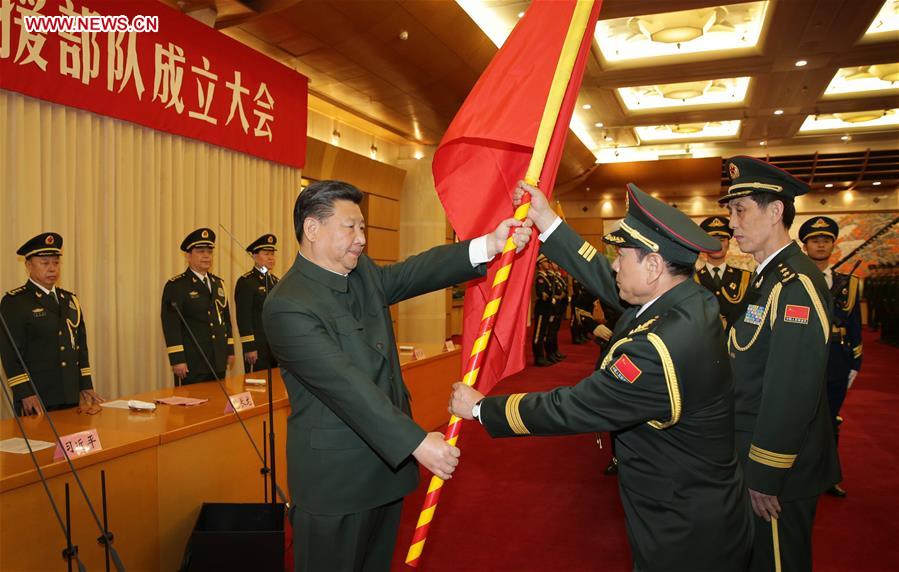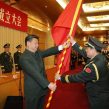
Taiwan’s Elections; Chinese Military Reform
Publication: China Brief Volume: 16 Issue: 1
By:

Taiwan’s Elections
Editor’s Note: Ahead of Taiwan’s presidential and legislative elections on January 16, we have devoted a number of this issues’ articles to the question of what cross-Strait relations will look like and how Taiwan’s ability to defend itself—a key strategic issue for the United States and for stability in the East Pacific—will be affected after the election.
The top presidential contenders include Democratic People’s Party (DPP) candidate Tsai Ing-wen (蔡英文), Kuomindang (Nationalist, KMT) candidate Eric Chu (朱立論) and James Soong (宋楚瑜), of the People First Party (PFP). According to the latest polls, Chu trails Tsai by almost 29 points (Straits Times [Singapore], January 11). Whoever eventually prevails will inherit a complex set of issues, ranging from a slowing economy and increased economic reliance on mainland China to Taiwan’s complex defense modernization project, which is undergoing a shift from a conscription-based system to a professional military (See China Brief, January 11).
Although Taiwan’s size and population (roughly 23 million) pales in comparison to the People’s Republic of China, its strategic location, economy and trade with the United States (it is the U.S.’s 12th largest trade partner) and complex relationship with the PRC means that its elections can have a major impact on the U.S.’s role in East Asia.
Stability for Taiwan has meant maintaining a credible deterrent so that it can determine its future relationship with mainland China without the threat of military coercion. As part of maintaining that deterrent, in mid-December the U.S. State Department approved a $1.8 billion weapons and services package for Taiwan, including ships, anti-tank weapons and air defense systems (Defense Security Cooperation Agency, December 16, 2015; CNA, December 17).
Attempts to alter the outcome of elections in Taiwan have previously led to dangerous levels of escalation in East Asia, such as the Third Straits Crisis between 1995 and 1996 that saw the deployment of two U.S. aircraft carrier groups to the vicinity of Taiwan in response to the PRC firing missiles into the sea to the north and south of Taiwan. With this critical election likely holding the keys to executive and legislative domination by one of the political parties, the winner will be a key partner for China and other Asian nations for resolving the host of territorial and economic issues in the region for the next four years.
***
Chinese Military Reform
On January 1, China announced a number of major reforms to its military. Though several of these reforms had been signaled or discussed in Chinese publications for many years, the implementation of them still marks a watershed in China’s military modernization. These follow a number of significant shake-ups over the past few years, with top military leaders expelled from the party, charged with corruption and others sidelined. To reach this point, Chinese President Xi Jinping has effectively had to sweep aside old interests and putting likeminded and loyal military officers into positions to see the reforms through. The reorganization will include a reduction in the size of the overall military (as announced in September during Xi’s commemorative World War II victory speech) and a reduction in the number of Military Regions (军区), which are to be reorganized into “Battle Zone Commands” (战区) (China Brief, September 9).
Part of this “deck stacking” has been careful selection of the leadership of the People’s Liberation Army’s (PLA) service heads, who will also be members of the Central Military Commission. Accordingly, new heads of China’s Navy, Air Force, Strategic Rocket Force, and Army Ground Force were announced. PLA Ground Forces commander Li Zuocheng (李作成), for example, was a highly decorated hero from China’s last significant conflict, the 1979 Sino-Vietnamese war. Navy Commander Sun Jianguo had operational achievements as the commander of a nuclear submarine (Baidu.com, [accessed January 5]). Their backgrounds reinforce the emphasis on operational knowledge and capability to “Fight and Win Wars” (能打仗,打胜仗). Though winning is obviously the objective of any military force, in the Chinese context it takes on additional meaning against the background of what the PLA has labeled the “Two Incompatibles” (两个不相适应), or the ability of the PLA to “win a local war under informatized (modern, networked warfare) conditions” or to “carry out the military’s ‘Historic Missions’” (新的历史使命) (China Brief, May 9, 2013; Jiangxi Defense Education, December 24, 2004). These reforms are meant to correct these “incompatible” truths and make the PLA an effective fighting force.
An “opinion” (意见) issued by the Central Military Commission—China’s top military body laid out the key tenets of these reforms, meant to meet China’s goal of completing military modernization by the longstanding deadline of 2020 (Xinhua, January 1). A key theme of the document is the emphasis on improving the quality, guidance and “jointness” of Chinese military forces. As one section explicitly states, the military should “speedily promote the transformation for a PLA reliant on numbers to one focused toward quality and effectiveness.” One of the biggest changes was the combination of the General Armament Department and General Logistics Department (the former responsible for weapons development, and both a traditional source of graft within the PLA) into a new Strategic Support Service (战略支援部队). This new service will likely have additional duties beyond logistics and development, with a strong possibility of an information warfare role that encompasses a range of capabilities, including psychological and cyber warfare (Tencent Online, January 1; People’s Daily Online, January 5). Other elements include a reorganization of the Second Artillery Force (SAF), responsible for China’s nuclear and conventional missile forces. The reforms transform the SAF from a subordinate branch (兵种) into a distinct service (军种), the PLA Rocket Forces (火箭军). In a final organizational shift, the PLA Ground Force, whose structure previously dominated China’s military thinking and resources, will be given a separate headquarters and structure, separating from the Chinese military’s central command structure.
More of aspects of these reforms will likely be revealed in the coming months, providing increased clarity about this significant improvement in China’s long military modernization.





